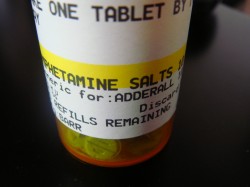
Amphetamines are prescribed for numerous purposes including narcolepsy and attention deficit disorders. Amphetamine pills diverted to the street are known as “go-pills,” “speed,””pep pills”, and “uppers and other amphetamines including methamphetamine and dextroamphetamine have a high potential for abuse and addiction. They are choice drugs for abuse by young adults, adolescents, and college students but people from all walks of life abuse amphetamines.
Amphetamines stimulate activity in the brain and central nervous system to enhance cognitive and performance functions, increase alertness, wakefulness, endurance, motivations, and arousals, but, they are most commonly abused for the sense of euphoria they produce. Increasingly, amphetamine abuse has become a major concern for society as prescriptions for amphetamines and illegal productions have made them more easily obtainable through illicit means.
Facts and Statistics on Amphetamine Abuse

Amphetamines are being increasingly prescribed, which is leading to more being on the market and potentially abused.
- ADHD diagnoses are increasing. According to the U.S. Centers for Disease Control and Prevention, as of 2011, 11 percent of people ages 4–17 have been diagnosed with ADHD. This means that stimulant medications including amphetamines to treat ADHD are also increasing.
- According to the National Center for Health Statistics Data Brief no. 42, from 2007 – 2008, “The most commonly used types of prescription drugs in the United States by age were: ….central nervous system stimulants for adolescents aged 12–19.” These types of drugs are prescribed mainly to treat attention deficit disorders but are often diverted to others for non-medical purposes.
- In a report from the Center for Substance Abuse Research, there were 2.5 million emergency department (ED) visits for drug misuse or abuse and the majority of them involved stimulants such as: cocaine (505,224), and estimated number of visits related to methamphetamine, PCP, and amphetamine use ranged from approximately 71,000 to 103,000.
- According to the DEA Diversion Control Program, the National Forensic Laboratory Information System (NFLIS), reports of ADD/ADHD stimulants that were submitted to state and local forensic laboratories between 2007 and 2011 for amphetamines more than doubled from 4,451 to 9,890 reports.
- According to the National Institute On Drug Abuse “In studies of chronic methamphetamine users, severe structural and functional changes have been found in areas of the brain associated with emotion and memory, which may account for many of the emotional and cognitive problems observed in these individual.”


